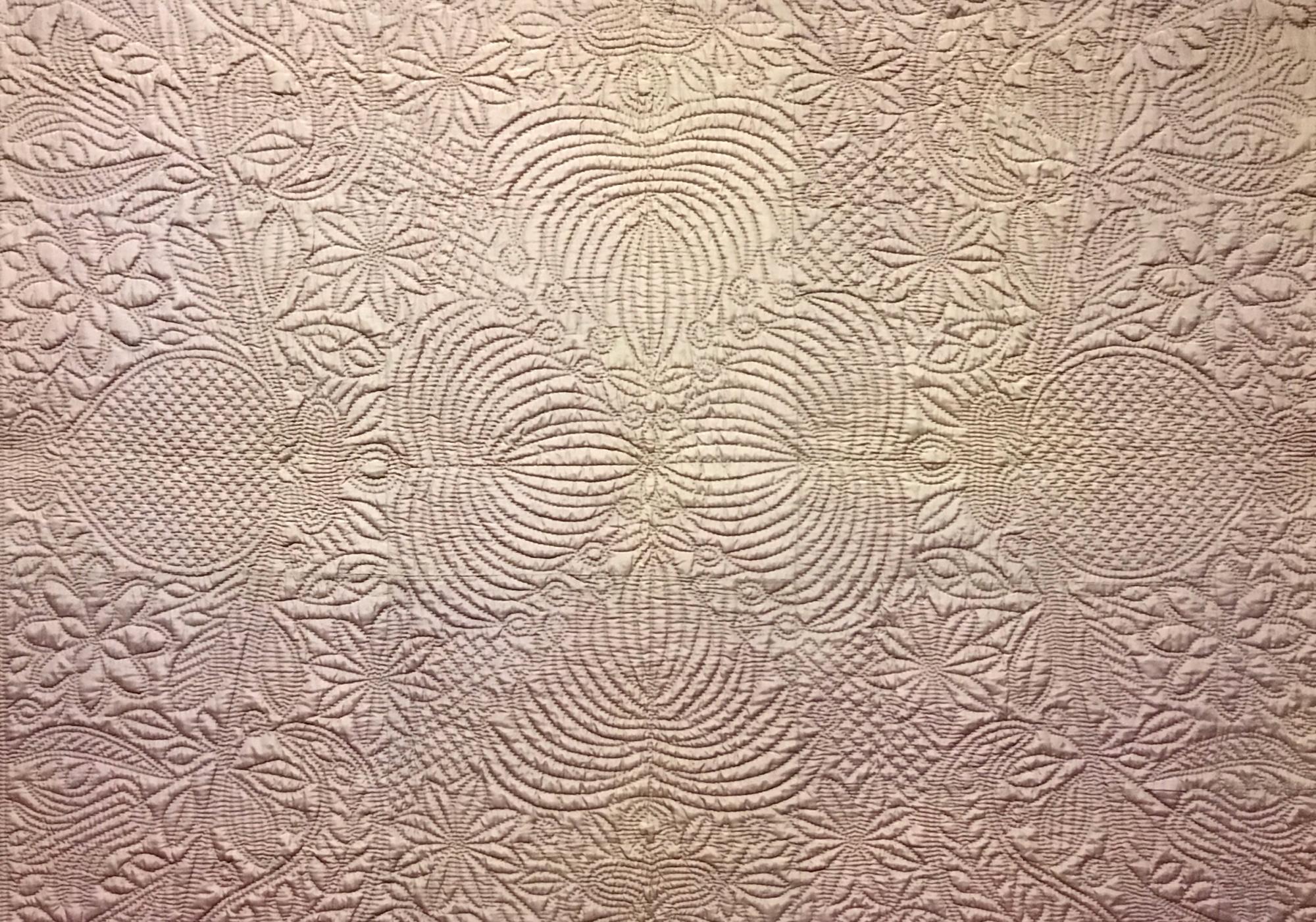
Color and Contour
June 15-Oct 28, 2018
Provençal Quilts and Domestic Objects

This collection of quilts and folk objects evokes the atmosphere of the south of France. Provençal needlewomen imbued their solid-color, wholecloth quilts with the light and abundance of their landscape. Inspired by the natural world and equipped with a vocabulary of ornamental motifs, they pulled miles of thread through layers of silk, cotton, and thick batting to create surface plays of light and shadow. Small items made of other materials—clay, metal, and wood—exhibit similar attention to the interplay of form and surface. In the pigments and patinas of these objects, we imagine the sun’s daily arc as it illuminated the colors and contours of the land itself, as well as the region’s hand-wrought textiles and vessels, tools and toys.
The strong golden sunlight of Provence illuminates all detail. Each leaf, each flower petal, the small curve of a snail shell, the refined form of carved architectural stone, everything that curves and swells, everything that recedes into shadow—all are limned with light… from subtle gray-green olive leaves and pale blue lavender florets to red-burnished pomegranates and golden sunflower petals.
- From Quilts of Provence